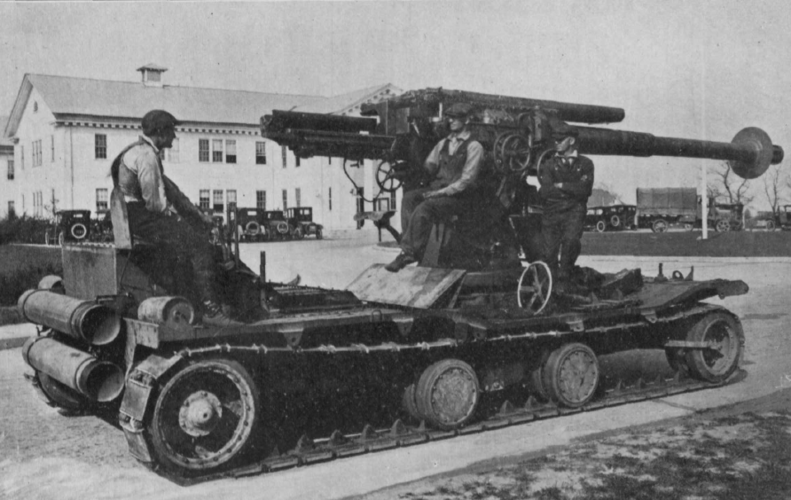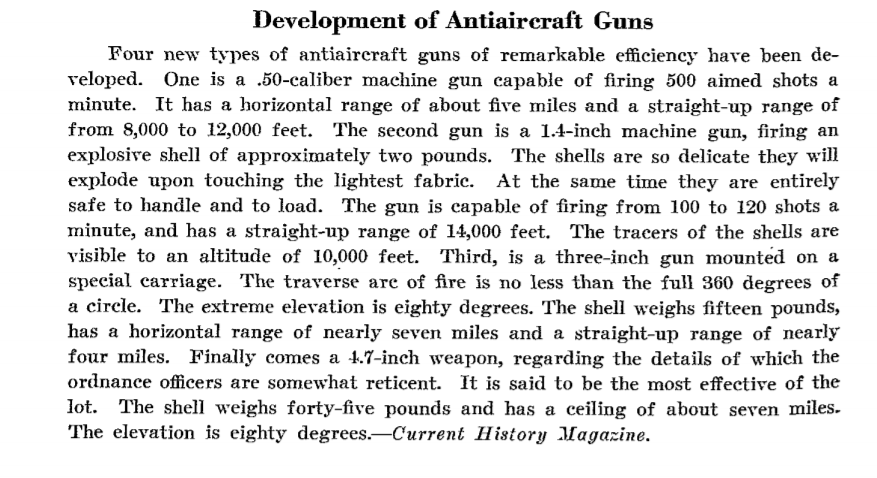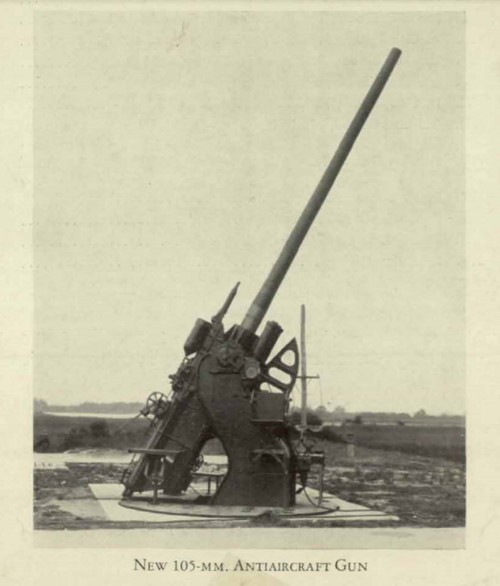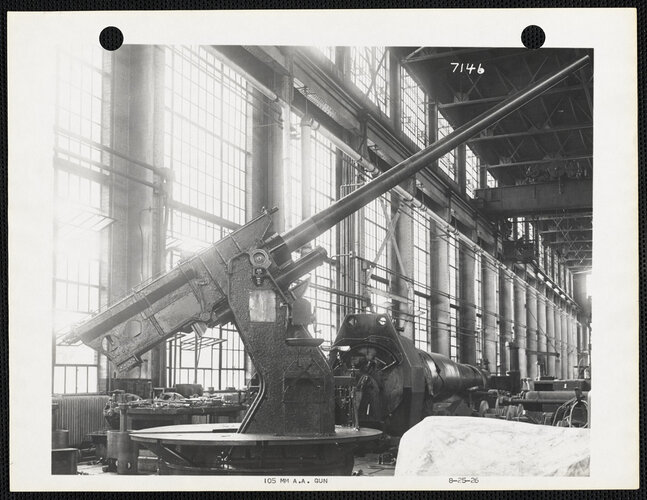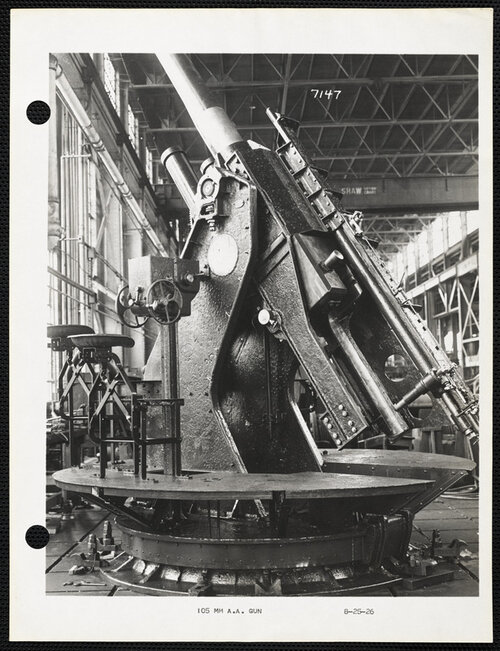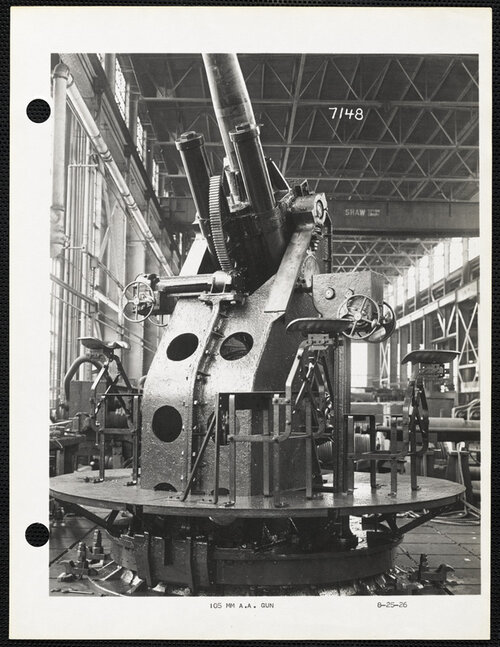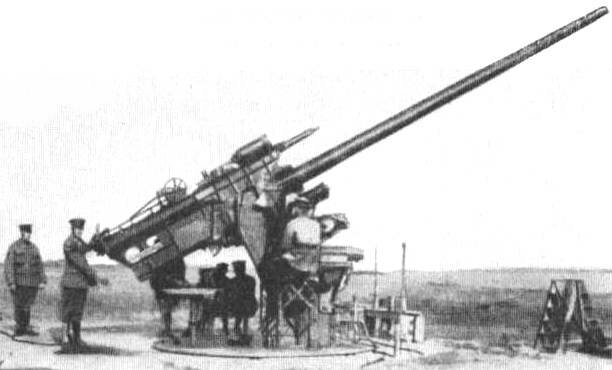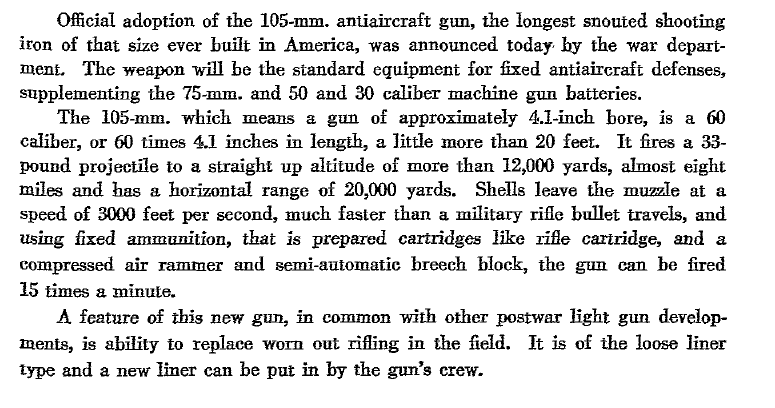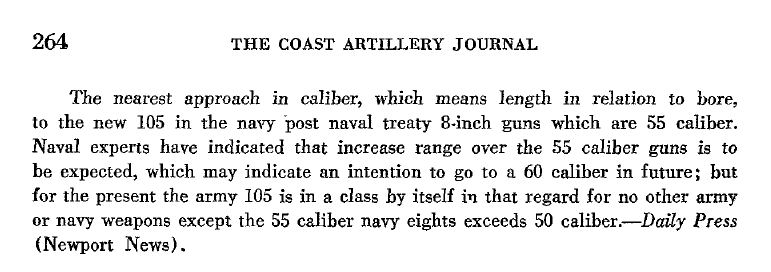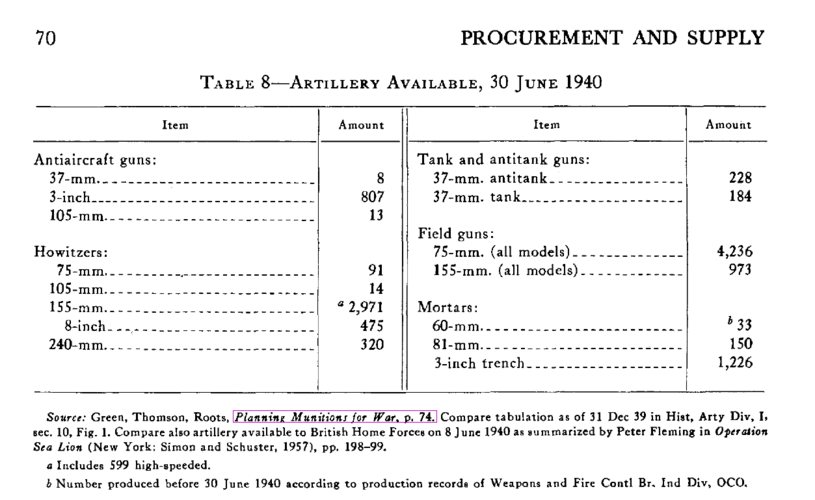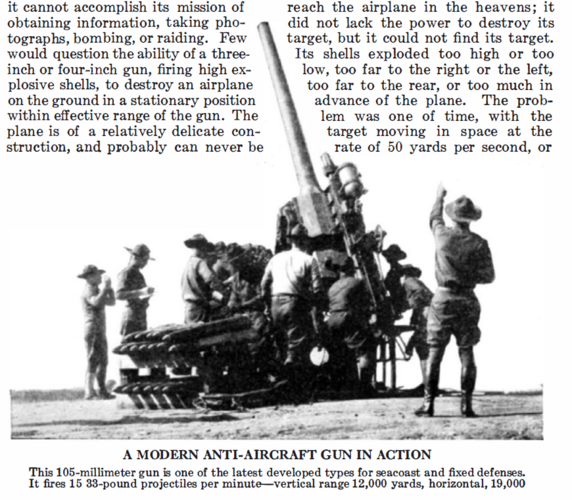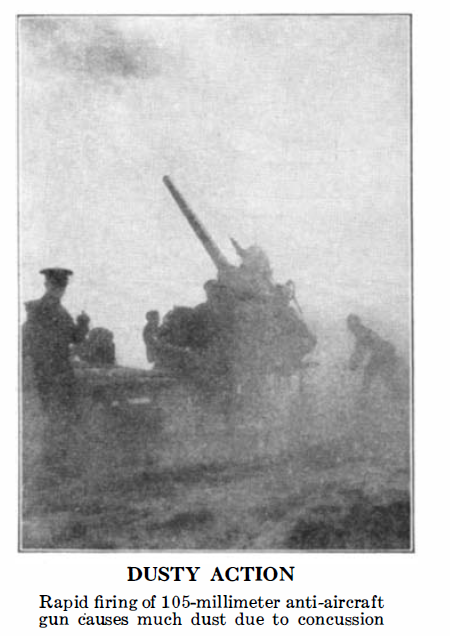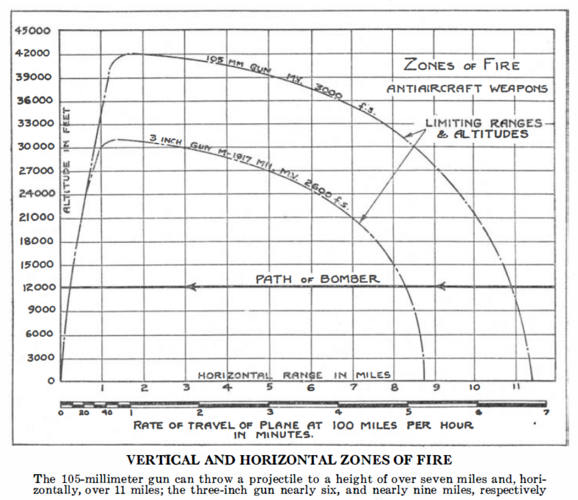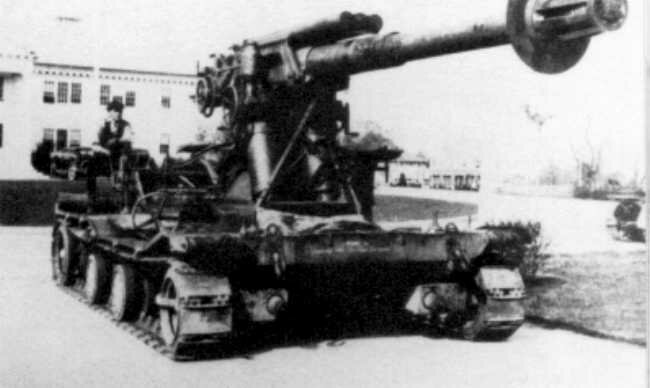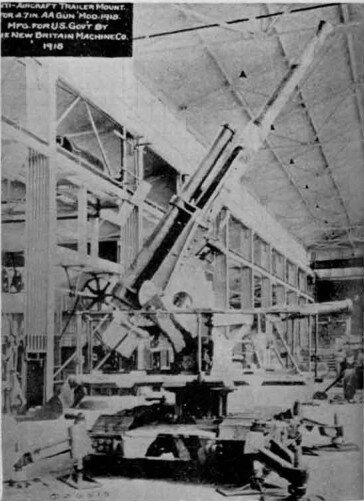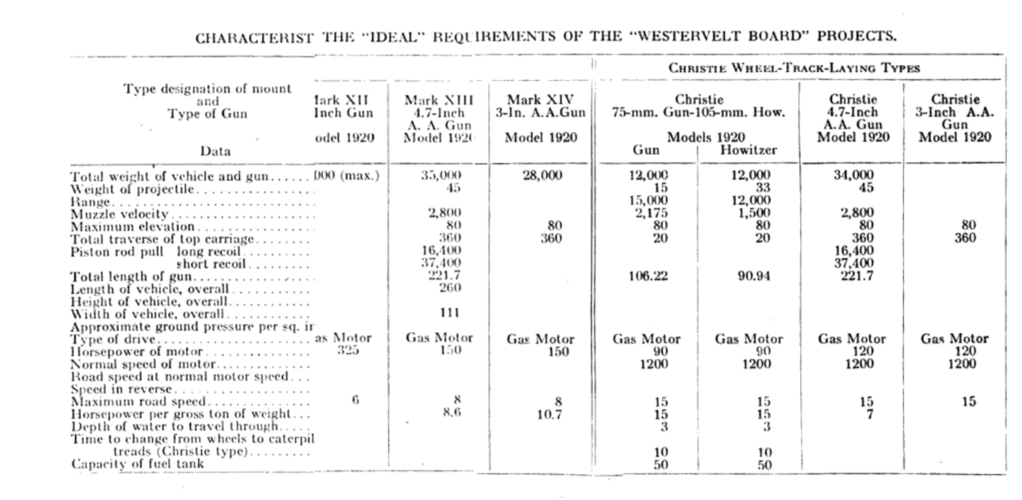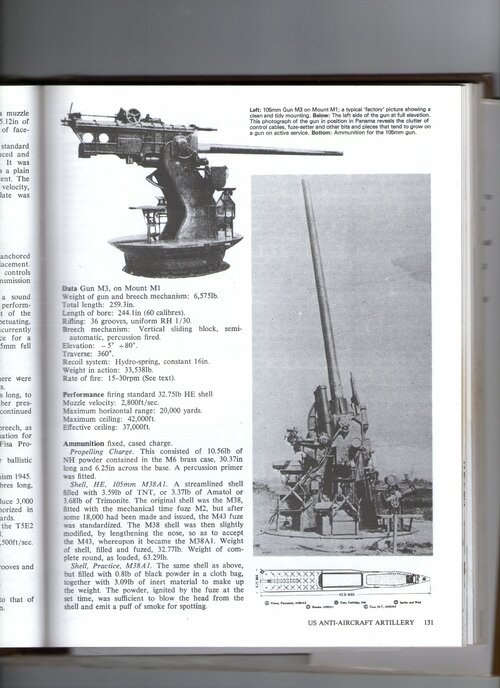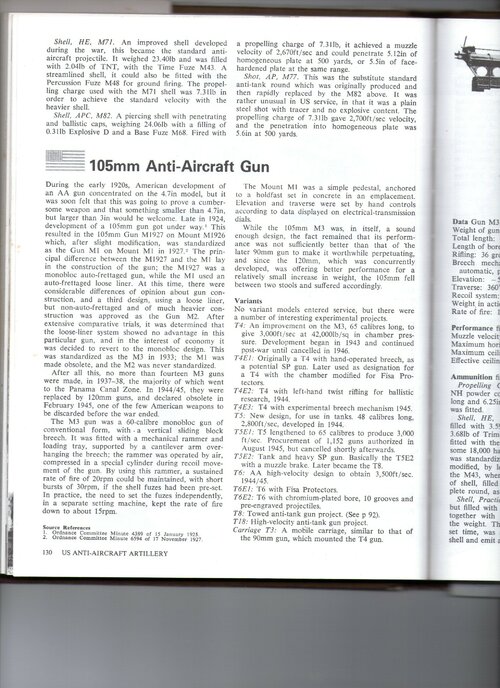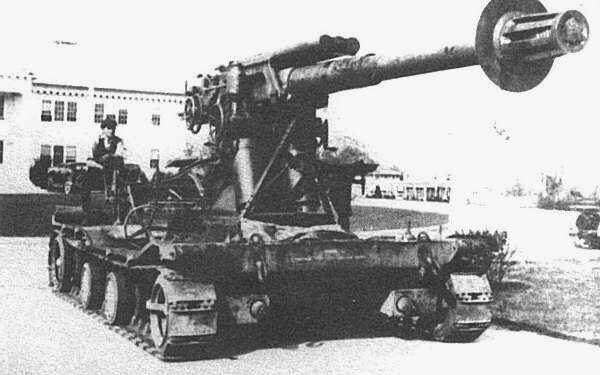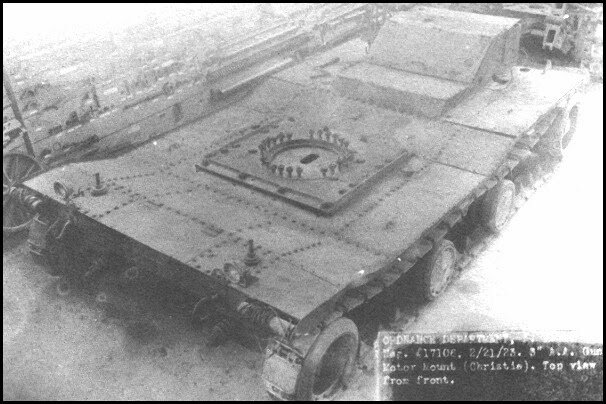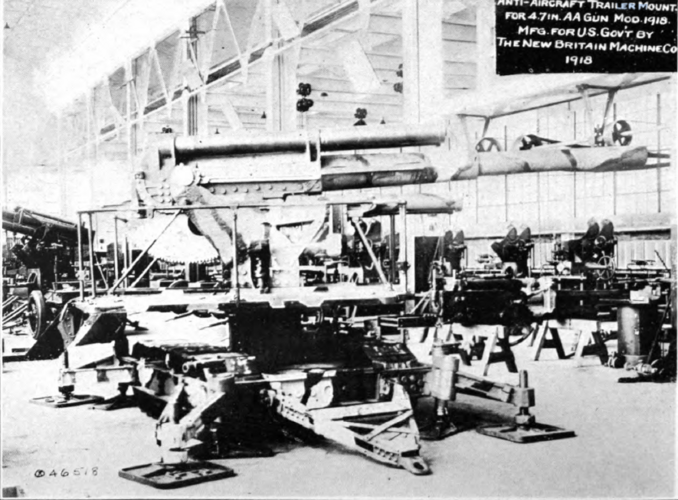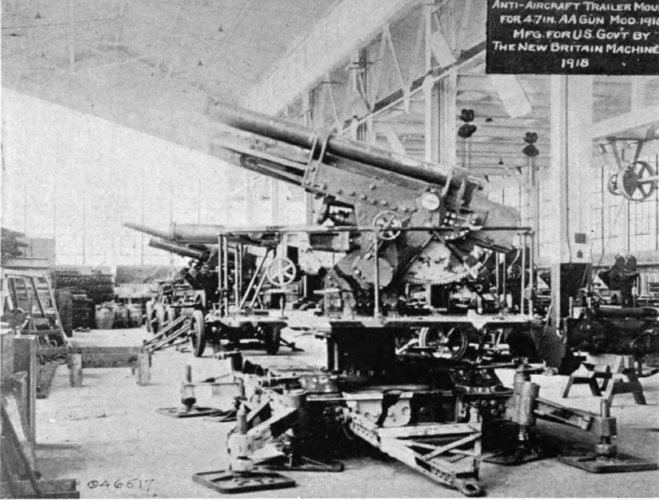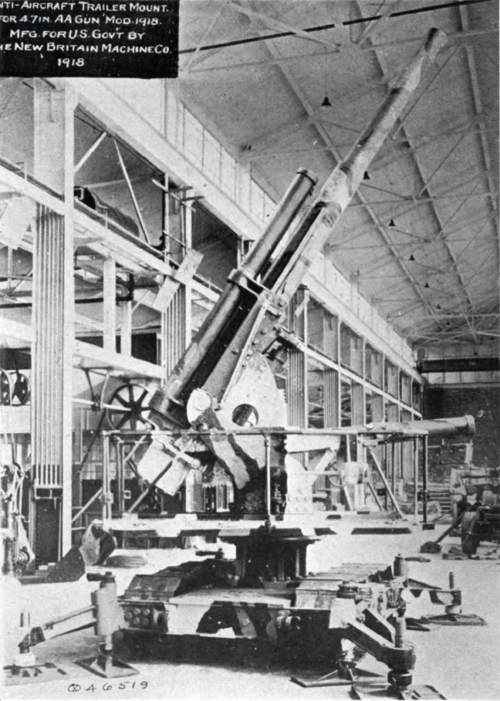Sgt_Miller
ACCESS: Confidential
- Joined
- 17 November 2019
- Messages
- 52
- Reaction score
- 84
I was looking for the history of the anti-aircraft guns of the US Army since 1918 but then stumbled upon an AA gun that I never heard of before. A little effort to find some information was done, but it's surprisingly quite scarce.
4.7-inch Mobile Gun, M1920E
The gun was supposed to be the highest-reaching gun of US Army air defense against the ever-growing aircraft technology in the early 1920s. It was to become the outermost air defense, with the 3-inch gun, 1.4-inch machine gun, and .50 cal machine gun having the engagement envelope beneath it. From the naming, it was assumed to be designed at the latest in 1920, though I don't know exactly how US Army gun designation works at that period. It was tested from the latter half of 1922 to late 1924, but the development was suspended on January 15th, 1925 due to the conclusion of the gun having excessive weight and it was decided to develop a smaller gun of 105 mm caliber in the same year.
From my understanding, the gun itself was initially designed to be a mobile gun since it had a self-propelling means using a Christie suspension-based chassis, hence the designation "Gun Motor Carriage". But the Christie chassis was deemed obsolete after a series of testing at Fort Monroe in summer 1924 and the development was then focused on the conversion into a fixed version, "4.7-inch Anti Aircraft Gun, M1920E", somewhere later that year. The development of a mobile gun was hoped to be continued, but only after a satisfactory fixed gun had been developed.
I don't know how many prototypes had been built and whether it was actually used by US Army or not is unknown. To note, obviously, it was a whole different gun from the 4.7-inch M1 "Stratosphere Gun" of the 1940s.
Specifications, compiled from various issues of Coast Artillery Journal:
Caliber: 4.7-inch (120 mm) L/42
Gun weight: 5,153 lbs (2,337.36 kg)
Shell type: HE, Fixed
Shell weight: 45 lbs (20.41 kg)
Shell fuze: Mechanical
Propellant weight: 11.7 lbs (5.3 kg)
Muzzle velocity: 2,600 fps (792 m/s)
Maximum ceiling: 30,000 feet (9,144 m), other stated 7 miles (11,265 m)
Rate of fire: 15 rpm
Elevation: -5° – 80°
Traverse: 360°
Recoil: Hydro-pneumatic
Ammo feed: Semi-automatic gun rammer
I couldn't manage to find another picture of this gun, the only one I found was a picture in the April 1925's issue of Coast Artillery Journal dated September 1924. If anyone has some information or even pictures of the gun, I'll be delighted!
4.7-inch Mobile Gun, M1920E
The gun was supposed to be the highest-reaching gun of US Army air defense against the ever-growing aircraft technology in the early 1920s. It was to become the outermost air defense, with the 3-inch gun, 1.4-inch machine gun, and .50 cal machine gun having the engagement envelope beneath it. From the naming, it was assumed to be designed at the latest in 1920, though I don't know exactly how US Army gun designation works at that period. It was tested from the latter half of 1922 to late 1924, but the development was suspended on January 15th, 1925 due to the conclusion of the gun having excessive weight and it was decided to develop a smaller gun of 105 mm caliber in the same year.
From my understanding, the gun itself was initially designed to be a mobile gun since it had a self-propelling means using a Christie suspension-based chassis, hence the designation "Gun Motor Carriage". But the Christie chassis was deemed obsolete after a series of testing at Fort Monroe in summer 1924 and the development was then focused on the conversion into a fixed version, "4.7-inch Anti Aircraft Gun, M1920E", somewhere later that year. The development of a mobile gun was hoped to be continued, but only after a satisfactory fixed gun had been developed.
I don't know how many prototypes had been built and whether it was actually used by US Army or not is unknown. To note, obviously, it was a whole different gun from the 4.7-inch M1 "Stratosphere Gun" of the 1940s.
Specifications, compiled from various issues of Coast Artillery Journal:
Caliber: 4.7-inch (120 mm) L/42
Gun weight: 5,153 lbs (2,337.36 kg)
Shell type: HE, Fixed
Shell weight: 45 lbs (20.41 kg)
Shell fuze: Mechanical
Propellant weight: 11.7 lbs (5.3 kg)
Muzzle velocity: 2,600 fps (792 m/s)
Maximum ceiling: 30,000 feet (9,144 m), other stated 7 miles (11,265 m)
Rate of fire: 15 rpm
Elevation: -5° – 80°
Traverse: 360°
Recoil: Hydro-pneumatic
Ammo feed: Semi-automatic gun rammer
I couldn't manage to find another picture of this gun, the only one I found was a picture in the April 1925's issue of Coast Artillery Journal dated September 1924. If anyone has some information or even pictures of the gun, I'll be delighted!
Attachments
Last edited:

